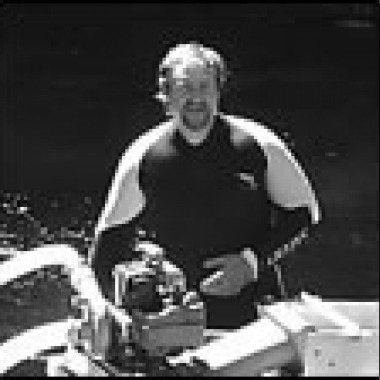Ask The Experts
Ask The Experts - A few questions about 'peak gold'
October 2018 by Chris Ralph
Q: Hello Chris. I really enjoy your professionally written articles in the ICMJ Mining Journal. You research and write to share knowledge; I find your work easy to absorb. I’d like your thoughts about another happenstance that could defer “Peak Gold.” I recall, perhaps five years ago, reading about the University of Nevada at Reno (UNR) and the big Nevada gold miners putting their heads together, discussing the annual decline in Au ounces and the lack of new reserve discoveries. The result was—I think they designed, developed and possibly offered an entirely new UNR mineral science degree focused on creative discovery and exploration techniques: “finding the unknown by thinking outside the box.” They felt confident Nevada had much more gold to offer, they just didn’t know where it was or how it will be discovered.
I’m probably not using correct geological terms above—my background is in international finance! I’m a weekend prospector, simply for the fun of it all. And that UNR degree program may never have been implemented. But you’ll grasp what I’m saying, and you’ll know if UNR is indeed teaching the above. If true, the new grads will be armed with the potential to postpone the “Peak Gold” timeline far into the future. Thanking you in advance.
Rich
A: Thank you for your kind words. You know the topic of peak gold output is a very interesting one and that’s why I decided to write about it. The obvious and easily seen deposits have been noticed, especially in places that receive a lot of mineral exploration like the state of Nevada. The other side of that coin is that geologists are using new ideas and other exploration methods that are constantly advancing as the sciences gain more knowledge. The unfortunate thing is that the more difficult to discover deposits are also more expensive to discover and mine. The majority of new discoveries being made in Nevada are now deposits covered over by gravels or other rocks at the surface. This means they are hidden and need to be found either by the use of projecting known geologic faults and other favorable rock types into areas of covered ground, or through geophysical testing.
Exploring for deposits you cannot see is a lot riskier than ones that come to the surface and can be tested and recognized. Drilling for buried and blind deposits often comes up with nothing but disappointment. Drilling has become very expensive, and because of this, many companies avoid as best they can drilling for blind deposits. What many companies use to help them “see” those blind deposits is a science known as geophysics. It is a series of tools which can help a company detect certain types of mineral deposits, even if they are buried under more than 100 feet of rock and soil. (I wrote about geophysics in our February 2012 issue and will likely be writing some more about it in the coming months.) Geophysical surveys are not cheap, but they can save a lot of money by avoiding useless drilling into barren rock. Although the science of geophysics is constantly improving, it is still not the magic wand to end the problem of peak gold.
I cannot find any special degree being offered by what is now known as the Mackey School of Earth Sciences and Engineering. (The old School of Mines name is now politically incorrect.) They offer a degree in geophysics that I do not think was offered when I attended there. The subject is a very specialized mix of geology and physics. An interesting book on the mineral potential of Nevada was written by the USGS a few years back, and I think you might be interested in it. It’s called: An Analysis of Nevada’s Metal-bearing Mineral Resources, USGS Open-File Report 1996-02, edited by Donald A. Singer. The paper version costs $100, but it can be downloaded over the Internet for free. There is a lot of very technical geology discussion in this report, but there is a lot of really useful information as well.
Ask The Experts: Is there a safe DIY alternative to cyanide or mercury for extraction?
Q: With safety as a given, what can the average miner, or Joe-blow greenhorn do to identify and extract some metals or minerals with off-the-shelf products or natural ingredients?
Ask The Experts
Gold left in Rye Patch by the time I retire?
Ask The Experts - Need advice on melting gold
Ask The Experts - Where can I get geological maps?
Subscription Required:
Free:
The Bawl Mill
• Legislative and Regulatory Update
• Ask The Experts - Seeking advice on processing pocket gold
• Ask The Experts - How do I recover gold in pyrite?
• Ask The Experts - Can a British citizen purchase a mining claim?
• Ask The Experts - Is California dredging going to return in 2019?
• Ask The Experts - Were you aware of the new recording fee in California?
• The Unusual Forest Nugget Patch
• California Sniping
• Large Gold Deposit Types
• PLP Update
• A Father’s Day to Remember: 24,000 Ounces Gold in Quartz
• How to Beat the Heat--and The Bedrock
• Gold Prospecting: For Better or Worse--It Was A Dark and Overcast Night
• Using Geologic Publications to Discover Collecting Sites
• Prospector Unearths Huge 'Duck’s Foot' Nugget
• Melman on Gold & Silver
• Mining Stock Quotes and Mineral & Metal Prices








